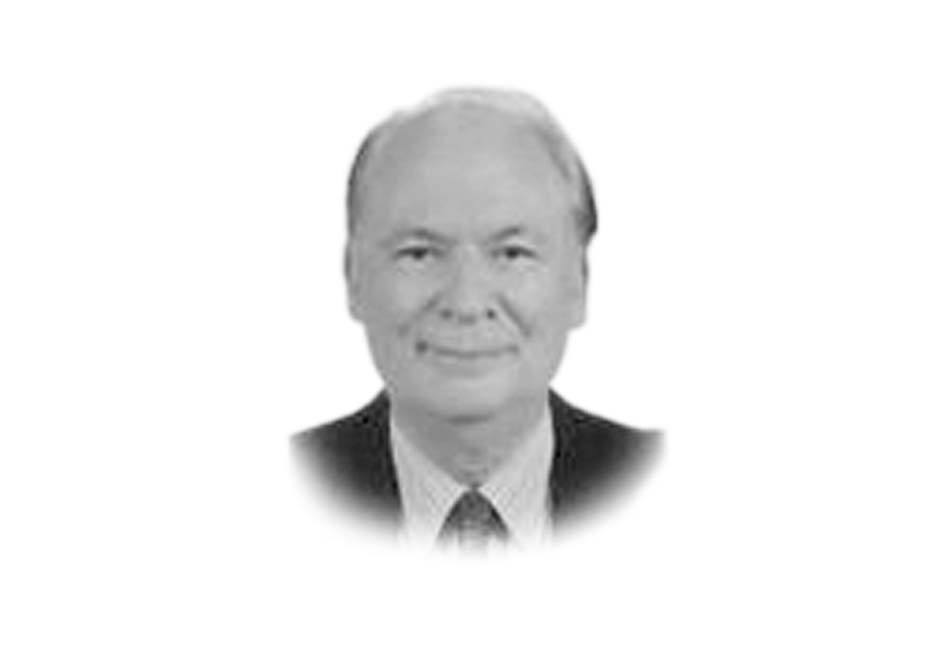
Some of my Sindhi friends have asked me why I so admired the man when he never really left anything positive behind except his concept of Sindhu Desh in which Sindhis and Mohajirs would live in peace. And yet, it is strange that when I spoke about the man and the myth at Hyder Manzil in Karachi, in the presence of my very good friend Dr Hamida Khuhro, and GM’s grandson, Jalal Mahmood Shah, and subsequently at the PACC in Hyderabad, there were no questions; just a stony silence of acquiescence, a string of bowed heads acknowledging what I had to say. I pointed out that one of the reasons why he had been so heavily criticised was the fact that he had parted from the Muslim League because of their unquestionable support of the landlords. But … he had earlier also chucked the Indian National Congress because of its support of Hindu moneylenders and its lack of concern for farmers.
Syed was at first, critical of another important Sindhi leader, Allah Bux Soomro, of the Sindh United Party and subsequently admired him. In The Case for Sindh published in 1995, there is Soomro’s famous comment, which considerably irked the Muslim League: “Our difficulties will begin after Pakistan comes into being … At present the Hindu trader’s and moneylender’s plunder is worrying you, but later, you will have to face the Punjabi bureaucracy and soldiery and the mind of the UP … You live in a dream world about the 1940 Resolution … In practical politics, there is little room for resolutions … Pakistan will pose a threat to Sindh’s independence, Indian unity and the peace and progress of other Indian nations.”
But when my Sindhi friends persisted in wanting to know why a cynic like myself was such a great admirer of a man who was incarcerated for 30 years for his political views, I told them it was because he believed in the separation of religion and state, because he had rekindled the flame of political courage and political defiance. Because he had revived the Sindhi spirit and Sindhi traditions of patriotism and humanism preached by mystics like Shah Abdul Latif Bhittai and Sachal Sarmast. And above all, because he was a great human being.
Published in The Express Tribune, January 20th, 2013.
COMMENTS (5)
Comments are moderated and generally will be posted if they are on-topic and not abusive.
For more information, please see our Comments FAQ













wish I could visit Sindh and Mohanjodaro . alas I will never be able to do that in this birth at least .
Beautifully written article on such a great leader of Sindh and sub continent. People have all the right to disagree with his philosophy, however no one has a right to label him as a traitor. I am also surprised by the comments made by Allah Bux Soomro. I have so much respect for him after reading his comments, till date I was of the opinion that only Abu Kalam Azad thought like this but now Sindh too has his fare share in the shape of A B Soomro. History has proved how true these 2 real intellectuals were, how far sighted they were. Sindh and migrants as a whole gain nothing in this process.
G.M.Syed's pre and post partition politics are pole apart. He is given credit for passing the resolution in sindh assembply for creating Pakistan and at the same time he is hailed for his secular credentials. This is conflicting. Was he not the person who brough religion into the politics of sindh through Masjid Manzil Gah dispute with hindus. Once he was kicked out of Muslim League he realized that his past political practices have brought destruction to Sindh. He spent all of his life to undo what he had done to Sindh but in vain.
Thank you for such a beautiful article.Not many dare to write on this controversial but still very popular icon of Sindh. He was demonized but his struggle and clear message for secularism, revival of indigenous culture and history, rights of provinces, multi-nation identity of Pakistan, liberty and justice still are very much relevant. He was the person who get the famous Pakistan resolution passed from Sindh Assembly in 1943 but he was labelled traitor post partition. What an irony, the real heroes were cornered and opportunists thrive in politics post 1947. This is time to honor real heroes and stop using hate labels for them.
We are still groping for our identity. Recent articles about “The Chachnama” the legacy of G.M. Syed and his person and comments thereon have all added to confusion. Some commentators have stated that Raja Dahir was a hero, and have queried if he can he considered a “Shaheed?” Other references are to the sainthood of G.M. Syed, the Sufi traditions of Sindh. Mohammad Bin Qasim’s conquest has been revisited and revised versions have been aired. Reference has also been made to Sindh’s five thousand old history and cultural wherewithal. So who are we? Sindhis with plural identities? Past is important but who are we in the present? References to the past have been made as if history has been at a standstill since then. A lot has changed and today we are not just what we were five thousand years ago! Significant changes have occurred from the times of Mohenjo-Daro, the Persian rule over Sindh, Mohammad Bin Qasim’s colonization, the Mughal rule, the British rule and so on. So let us define who we are today and have a common platform for moving forward. A people still groping for their identity cannot make progress in the future.